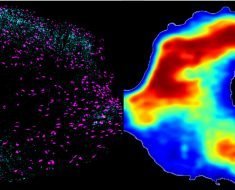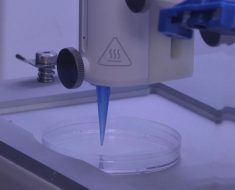A multi-disciplinary team of scientists, led by prof. Peter Carmeliet (VIB-KU Leuven Center for Cancer Biology) has made several breakthrough discoveries concerning the metabolism of the individual building blocks of blood vessels—the so-called endothelial cells. They identified three key proteins that determine how blood vessels grow and behave, and that may become new therapeutic targets in blood vessel related disorders, such as life-threatening cancers and blinding eye diseases. The findings have been published in Nature and Cell Metabolism.
All organs in the human body rely on blood vessels for a continuous supply of nutrients and oxygen. This makes the vasculature—the entire network of blood vessels—one of the largest and most important organs in the body. In healthy individuals, the vasculature is stable and diligently performs its tasks. However, in several serious diseases like cancer or diabetes, the blood vessels derail and start growing excessively or lose their normal function altogether. Given the increasing prevalence of cancer and diabetes, novel therapies for blood vessel-related disorders are urgently needed. Additionally, such novel therapies should be based on entirely different molecular mechanisms than currently available strategies (mostly anti-VEGF), which show limited success due to resistance mechanisms and overall low efficacy.
To pinpoint what determines normal and abnormal blood vessel behavior, research has focused for decades on endothelial cells (ECs), the individual building blocks of blood vessels. ECs have long been considered as passive building blocks, but Carmeliet and colleagues were the first to reveal a pivotal role for EC metabolism in blood vessel formation and function. This challenging and pioneering research has now identified three new possible therapeutic targets in blood vessel related disorders.
In a new study, researchers Joanna Kalucka, Laura Bierhansl, Nadine Vasconcelos Conchinha and Rindert Missiaen found that ECs need to burn fatty acids in order to stay healthy and withstand stress insults. They discovered that a protein called ‘CPT1A’ plays an essential role in this phenomenon and published these insights in the latest edition of Cell Metabolism.
Another publication in the same issue of Cell Metabolism, describes the work of Drs. Ulrike Brüning and Francisco Morales-Rodriguez, who showed that inhibition of an enzyme involved in the synthesis of fatty acids, called FASN, prevents excessive blood vessel growth in eye disease.
Finally, Drs. Guy Eelen and Charlotte Dubois unraveled a totally unexpected role for the enzyme glutamine synthetase in sustaining motility of the ECs through a mechanism requiring a fatty acid called palmitate. Their research results are published in Nature.
Source: Read Full Article





